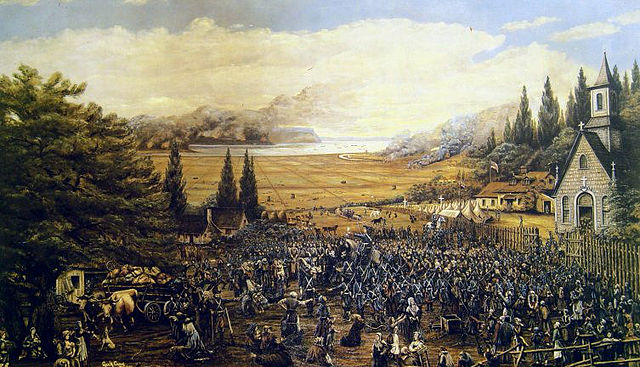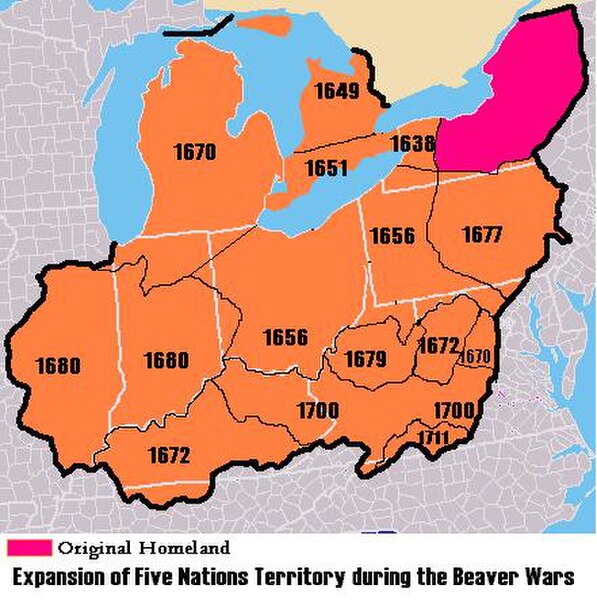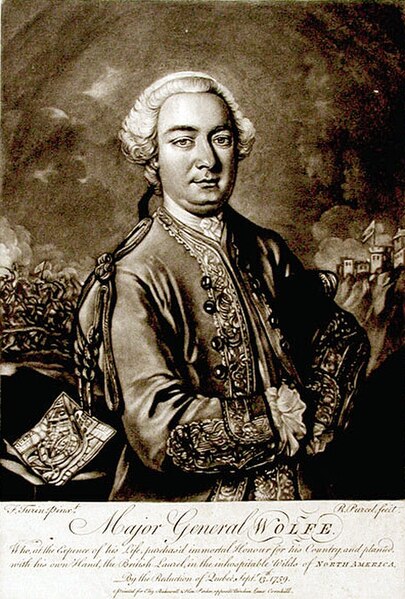The Bay of Fundy campaign occurred during the French and Indian War when the British ordered the Expulsion of the Acadians from Acadia after the Battle of Fort Beauséjour (1755). The campaign started at Chignecto and then quickly moved to Grand-Pré, Rivière-aux-Canards, Pisiguit, Cobequid, and finally Annapolis Royal. Approximately 7,000 Acadians were deported to the New England colonies.
Acadian Memorial Cross, at Hortonville, Nova Scotia, marking the deportation site of the Grand Pré inhabitants
Grand Pré: Deportation of the Acadians (artist's conception)
John Thomas - British surgeon who wrote diary of 1755
The French and Indian War (1754–1763) was a theater of the Seven Years' War, which pitted the North American colonies of the British Empire against those of the French, each side being supported by various Native American tribes. At the start of the war, the French colonies had a population of roughly 60,000 settlers, compared with 2 million in the British colonies. The outnumbered French particularly depended on their native allies.
The coureurs des bois were French-Canadian fur traders, who did business with natives throughout the Mississippi and St. Lawrence watershed.
Iroquois expansion, 1711. By the mid-18th century, the Iroquois Confederacy had expanded from Upstate New York to the Ohio Country.
The Cherokee, c. 1762. The Cherokee were subject to diplomatic efforts from the British and French to gain their support or neutrality in the event of a conflict.
General James Wolfe, British commander







